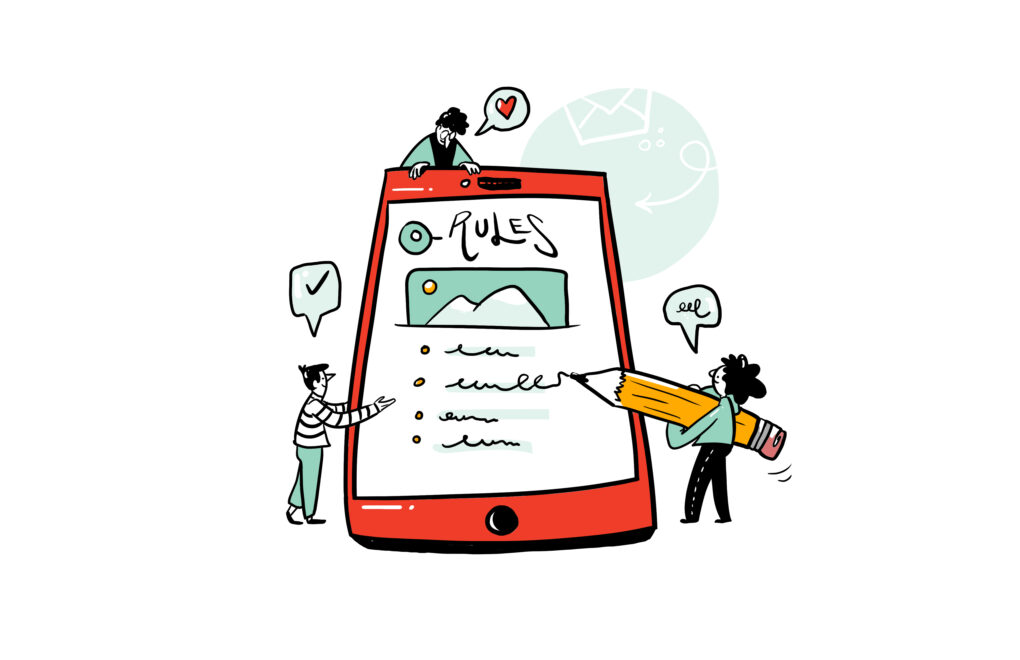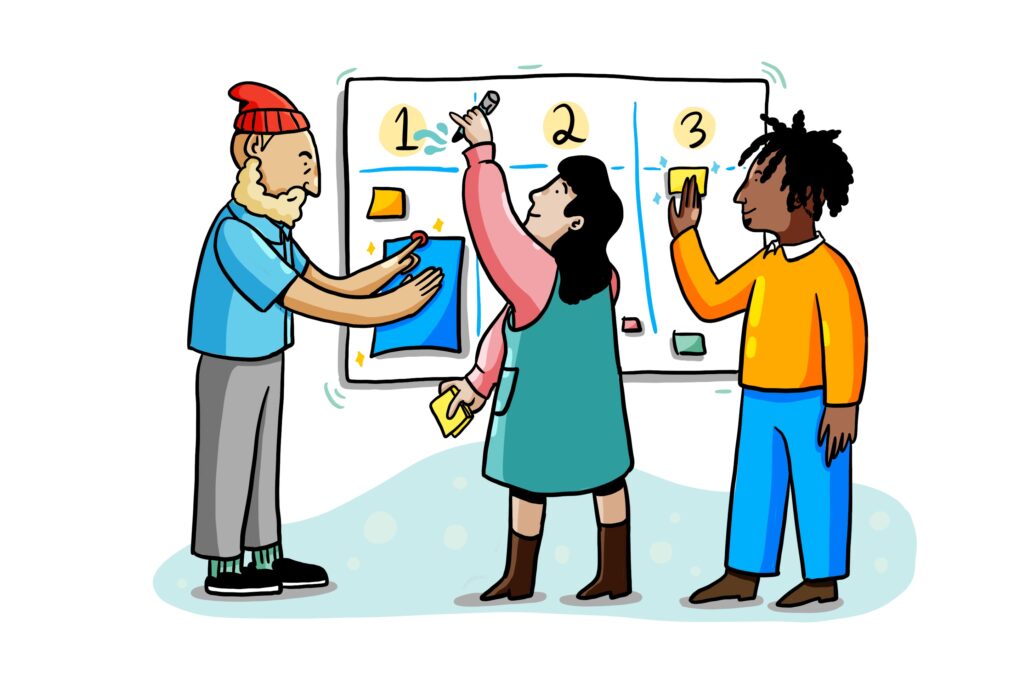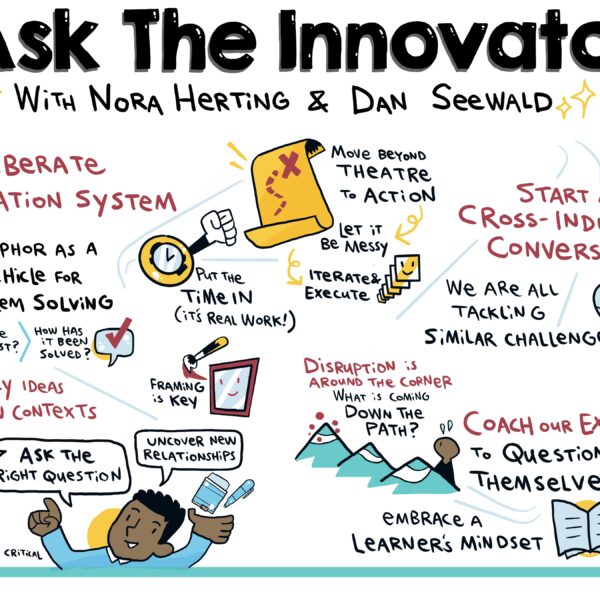The storm has passed. Now what?
For teams and individuals, brainstorming and ideation sessions can produce a breadth of new ideas, and renew team energy. Yet, the real magic happens when those ideas begin to take shape. The journey from concept to creation isn’t without hurdles – it requires selection, refinement, and effective execution.
In addition to capturing and helping clients develop unique and innovative ideas, ImageThink helps turn ideas into action. This blog will act as your guide to after-ideation. In it, we’ll walk you through the essential steps of evaluating ideas and implementing them post-brainstorm, and how you can leverage the transformative power of visual tools throughout.

Setting the tone for a successful evaluation
Transitioning from creation to evaluation requires a shift in mindset. Ideas flow in a creative, open, and nonjudgemental environment, where quantity is the primary objective. Evaluating, on the other hand, demands critical, logical thinking to assess which ideas are viable and realistic, and which are not.
To ease this transition, it’s best to establish clear criteria for evaluation before the brainstorming process. This can be done by noting and incorporating constraints into your brainstorming session, or by setting a plan for subsequent evaluation right from the start. In establishing criteria, you may include items like scalability, impact, alignment with the company’s vision, resource availability, and implementation time. By taking this approach, teams maintain alignment with organizational or project goals, while also allowing creativity to flourish during ideation. Think of this step as setting yourself up for success.

Subsequentially to establishing criteria, effective evaluation occurs when you have a clear idea of the big picture. That means, accurate documentation of ideas during the brainstorming phase. Assigning a designated notetaker, or employing techniques like graphic recording helps capture insight, making it easier to review and analyze information during the evaluation phase. Additionally, a summary of ideas – visual or otherwise – clarifies complexities, and ensures that nothing gets lost in the transition from conception to evaluation.
Evaluating ideas
Evaluating ideas requires a structured approach that balances creativity with practicality. By now, you should have your criteria set and can begin assessing your ideas on this framework. In the evaluation process, simple questions surrounding criteria is effective. Consider:
- Relevancy – Does this idea address the problem or opportunity at hand?
- Feasibility – Do we have the resources to implement this idea?
- Impact – How will implementing this idea benefit our team and stakeholders? (Think in both the short and long-term).
In the evaluation process, you might also consider how the addition of external perspectives can bolster, or eliminate ideas. Often, diverse perspectives (either from different departments, customers, or other stakeholders) can reveal strengths or gaps that may be overlooked.
But what if you also leveraged visual tools in evaluation? Visual templates like impact/effort matrixes and SWOT analyses, or the incorporation of post-it notes to rank or mark individual voting help simplify the evaluation process by organizing information. As a result, it’s easier to assess and compare ideas, and identify the clear winners that hold the most promise. Graphic recording can also be an invaluable tool in the evaluation process, by capturing discussions surrounding ideas and their effectiveness. Visual summaries often reveal key themes in a team’s overall thinking and highlight what’s great – or not so great – about an idea.

Taking evaluation to implementation
You’ve chosen the most promising ideas. Now it’s time to turn them into action. Implementing ideas involves outlining specific steps, assigning responsibilities, setting realistic timelines, and defining metrics. Here, you ask, “What does success look like?” and make the effort to not only define it but ensure the goals you set are realized.
Visuals can be helpful in the implementation phase, particularly for keeping teams aligned and motivated throughout. By turning the areas you’ve defined into a visual roadmap, teams are provided with a tangible asset that acts as a guide. A visual outlining idea to execution also helps keep the bigger picture in focus, reminding teams of the end goal. Leveraging visuals in this way enhances understanding of these key parts, provides accountability, and helps teams manage complexities associated with realizing an idea.
Keep in mind – implementation is not always straightforward. Routine project monitoring, and readiness to adjust plans as needed are key to navigating unforeseen challenges, and seeing your ideas brought to light.
Turn your ideas to action with ImageThink
The journey from brainstorming to implementation is challenging. The right strategies and tools help ideas come to fruition and makes the journey all the more rewarding. If you’re seeking a way to take your ideas one step further, get in touch with us today to learn more about how ImageThink can help you generate and effectively implement ideas.



